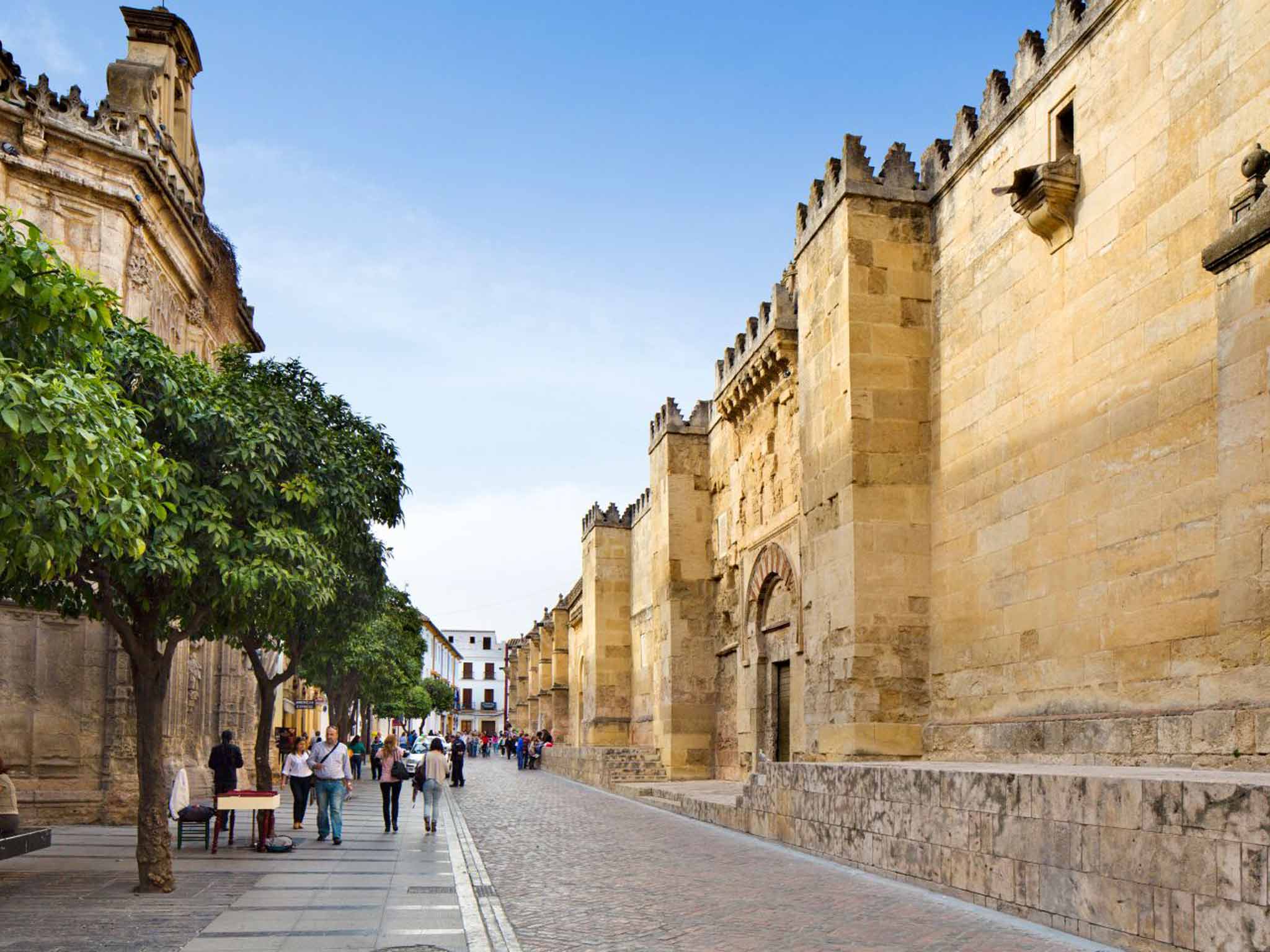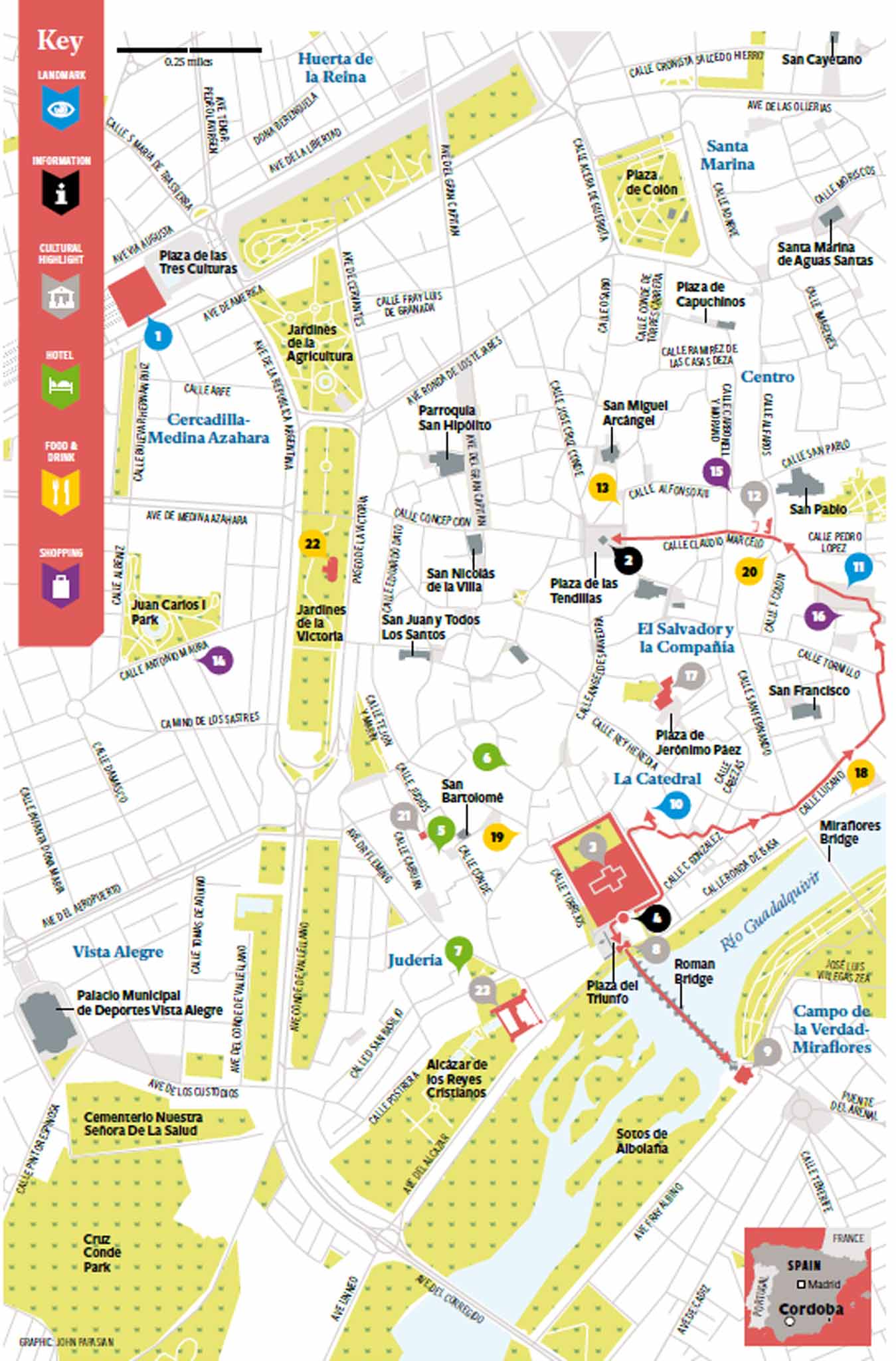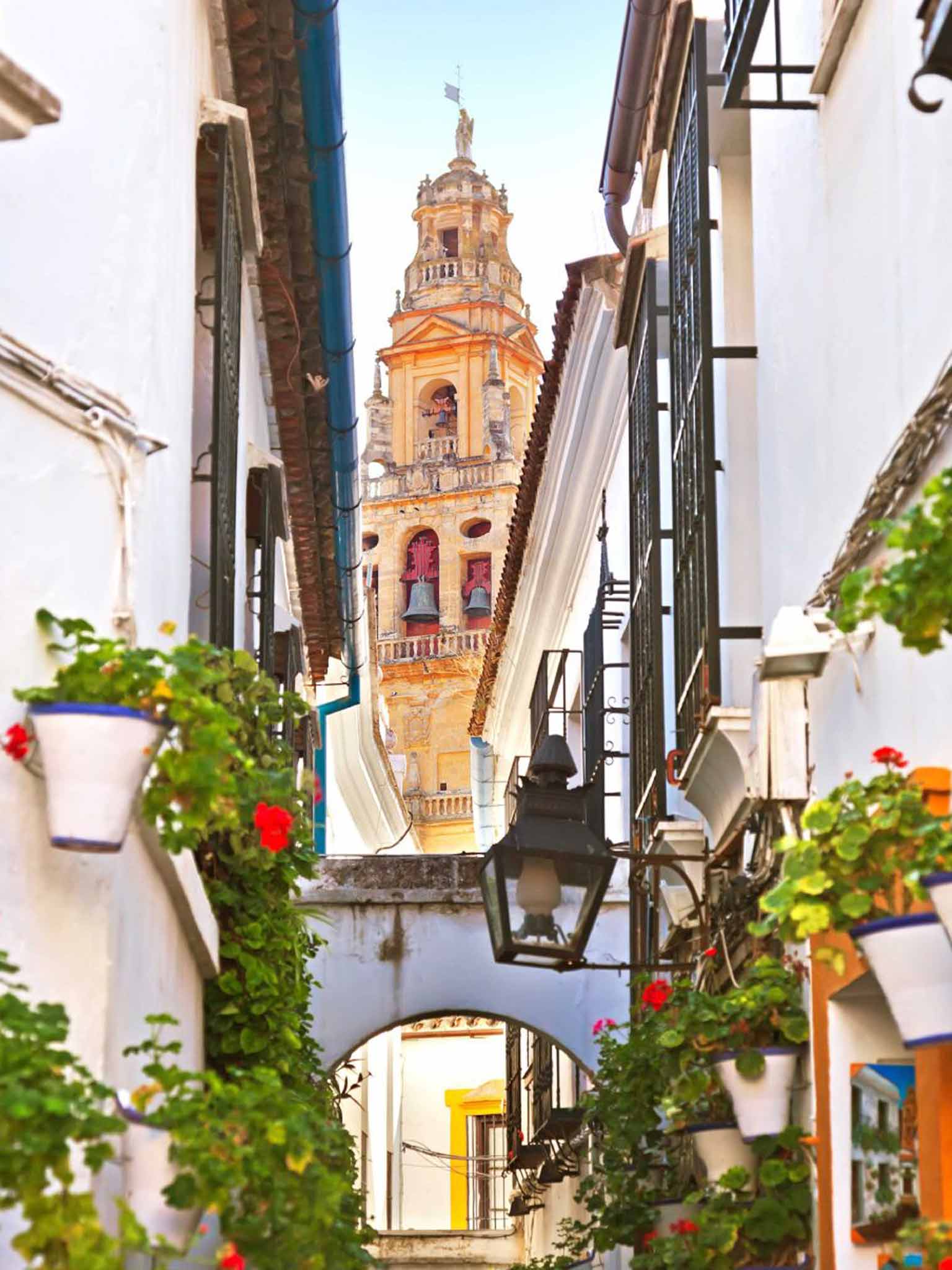The Independent's journalism is supported by our readers. When you purchase through links on our site, we may earn commission.
Cordoba travel tips: Where to go and what to see in 48 hours
This Andalucian city, once the centre of a powerful caliphate, is layered with Moorish, Jewish and Catholic heritage, says Simon Calder

Your support helps us to tell the story
From reproductive rights to climate change to Big Tech, The Independent is on the ground when the story is developing. Whether it's investigating the financials of Elon Musk's pro-Trump PAC or producing our latest documentary, 'The A Word', which shines a light on the American women fighting for reproductive rights, we know how important it is to parse out the facts from the messaging.
At such a critical moment in US history, we need reporters on the ground. Your donation allows us to keep sending journalists to speak to both sides of the story.
The Independent is trusted by Americans across the entire political spectrum. And unlike many other quality news outlets, we choose not to lock Americans out of our reporting and analysis with paywalls. We believe quality journalism should be available to everyone, paid for by those who can afford it.
Your support makes all the difference.Travel essentials
Why go now?
“An ornament of the world” – that is how the 10th-century writer Roswitha of Gandersheim described this Andalucian city, when it was the biggest conurbation in Europe. Under Islamic rule, Cordoba was the capital of a caliphate with 250,000 inhabitants.
Today, it is still a gem of a city, with much evidence of Moorish times. As Holy Week gets under way, Christianity takes centre-stage with processions threading through the ancient streets. And a strong Jewish heritage completes las tres culturas.
Touch down
Cordoba is one of the few large Spanish cities without direct flights from the UK. The closest non-moribund airport is Seville, served by British Airways and easyJet from Gatwick and by Ryanair from Stansted. Buses run from Seville airport to the city's Santa Justa station, from where high-speed trains to Cordoba take about 40 minutes.
Cordoba rail station (1) is on Avenida de America at the western side of the city. It contains a small tourist office.
Get your bearings
The historic quarter fills a ragged diamond constrained by the Guadalquivir river and a sequence of avenidas that roughly follow the old city walls. The most central tourist office (2) is in the middle of the main square, Plaza de las Tendillas (00 34 902 201 774; english.turismodecordoba.org; 9am to 2pm daily).
Pride of place goes to the Mezquita-Catedral (3) – the mosque-cathedral. The Moors began to build on the foundations of a Visigoth cathedral in 784. The vast prayer hall with 1,293 pillars was completed in the 10th century. After the Reconquest, a cathedral was built in the heart of the mosque.
Immediately to the west is the Barrio de la Judería, the old Jewish district. Projecting south-east from the Mezquita is the Roman bridge. Between the Mezquita and the bridge, the Visitor Centre (4) rests on the foundations of a bishop's palace from the Visigothic era and introduces the city's history; 9.30am to 3.30pm at weekends, to 7.30pm weekdays.
Check in
The Jewish quarter provides easy access to the historic centre and has hotels of character and value (though rates everywhere in Cordoba during Holy Week can be painfully high).
The NH Amistad (5) at Plaza Maimónides 3 (00 34 957 42 03 35; nh-collection.com) comprises two 18th-century palaces, with intricate mudejar (Moorish-influenced) architecture most evident in the gorgeous courtyards. Standard double rooms (known as “superior”) are available for as little as €94, with breakfast an extra €15 per person.
Nearby, the Hotel Albucasis (6) at Calle Buen Pastor 11 (00 34 957 478 625; bit.ly/Albucasis) is a bright, clean two-star with a garden, just right if you plan to spend your time exploring. Room-only rates for solo travellers start at €40.
At the foot of the price range, Hostal Alcazar (7), tucked away beside Plaza Campo Santos Martires at San Basilio 2 (00 34 957 202 561; hostalalcazarcordoba .com), offers decent double rooms at €42, excluding breakfast.

Day one
Take a hike
Start at the Visitor Centre (4) in Calle Triunfo. Walk through the Puerta del Puente (8), a 16th-century triumphal arch, then on to the Roman bridge – controversially upgraded for the 21st-century, and defended at the far end by a later creation, the Moorish Calahorra Tower (9). Then, walk back – noting the ancient mill wheel and the stretch of Moorish walls on the left – and start to delve through its many attractions.
When you reach the walls of the Mezquita (3), turn right to follow the perimeter for two sides; the fortifications were added by the Christians to what had been the holiest site in Moorish Iberia.
Turn sharp right down Calle Martinez Rucker, and at the Plaza de la Concha turn left into Calleja del Panuelo (10), which translates as “handkerchief alley”. The tourist literature describes it as “a street as narrow as a Ryanair seat”; in fact, at 29 inches, it is considerably broader.
Follow the old streets in an arc to the Plaza de la Corredera (11), a formal square whose sheer scale, combined with ox-blood walls, makes you feel like you've wandered into a different city.
Exit on the north-west side along Rodriguez Marin, and you reach a cluster of Roman columns – all that remains of the Claudio Marcelo temple (12), now inhabited by a clan of cats. Follow Calle Claudio Marcelo to Plaza de las Tendillas (2), the heart of the city.
Lunch on the run
On Plaza de las Tendillas (2), the Fénix Café has a 1960s vibe – and prices: a café con leche plus tostado with ham, tomato and olive oil comes in at just €2.60. For something more substantial, north of the main square, at Plaza Marmol de Bañuelos 1, La Tortuga (13) is a buzzing bistro, with soups, salads and a €9.50 set lunch.
Window shopping
Don't dawdle over lunch: on Saturdays, shops typically open from 10.30am to 2pm (10am to 1.30pm and 5.30 to 8.30pm, on weekdays, closed Sundays). Distinctive stores include Androito Comics (14) at Calle Alcalde de la Cruz y Ceballos 2, for vintage (mainly Spanish) magazines, and Lala-NA (15) at Calle Maria Cristina 1, specialising in arts, crafts and knitting.
The main market (16), just south of Plaza de la Corredera. opens 8am to 3.30pm on Saturdays, to 3pm Monday to Friday.
Cultural afternoon
To comprehend Cordoba's importance as a Roman city, go to the Museo Arqueologico (17) in Plaza de Jerónimo Paéz (Tuesday to Saturday 9am to 8.30pm, Sunday 9am to 3.30pm, free with EU passport; closing at 3.30pm, daily from mid-June to mid-September). This dramatic modern venue is built atop the ancient amphitheatre and its exhibits range from a lime kiln, used for recycling Roman marble as lime, to pockets full of silver coins found during excavations for the museum itself.
An aperitif
Cordoba largely turns its back on the river, but east of Miraflores Bridge stands a cluster of bars. At Fusion by Sojo (18), a mojito costs €6.
In the Jewish quarter, Rafae (19), at Calle Deanes, is a busy, cheerful bodega- taberna with walls decked in faded sepia pictures of long-dead bullfighters. Try a glass of Montilla-Moriles, the local variant on sherry, with salmorejo – a cold, thick and garlicky soup topped with crumbled hard-boiled egg and ham. Taste it as a tapa (€2.50) or scoff a ración (€6).
Dine with the locals
Little has changed at Taberna Salinas (20) at Calle Tundidores 3 (00 34 957 480 135; tabernasalinas.com) since it opened in 1879 – except for the natural light filtering through to the central dining room as a result of remodelling of 1924. If the speciality mantias de cerdo (pigs' trotters) with chick pea stew does not appeal, the menu has plenty of alternatives.

Day two
Sunday morning: go to church
Fittingly for the most important city in Andalucia, the Moors built the most beautiful mosque – La Mezquita (3). Today, the official line is clear: you are visiting the Cathedral of Cordoba, though reference is also made to the “Islamic intervention”. It opens 8.30 to 11.30am and 3pm to 6pm on Sundays, and 10am to 6pm on other days, entry €8 (to avoid this fee, visit 8.30 to 9.30am from Monday to Saturday, when individual tourists are allowed in free, but are expected to remain silent).
The still spiritually inspiring synagogue (21) on the Jewish district's main street, Judios, opens to the public on Sundays 9am to 3.30pm; other days, 9am to 8pm.
Out to brunch
The kitchens at Mercado Victoria (22) open at 10am each day. The Caseta del Círculo de la Amistad, built from wrought iron in 1877 as a fairground pavilion in the middle of a broad paseo , has been filled with 20 eating options. Try Panea for coffee and a pastry.
Take a ride
On the city side of the road opposite Mercado Victoria (22) is the bus stop for one of Spain's most intriguing outings. Each day, except Monday, at 10.15am and 11am, a coach departs for the ruins of the Moorish “brilliant city” of Medina Azahara. (The corresponding return buses leave at 1.30pm and 2.15pm; return fare, €8.50.)
The remains are where the mountains subside into the Guadalquivir river, 8km north-west of the city. You are dropped at the museum, which tells the story of how the 10th-century Caliph of Cordoba, Abd-ar-Rahman III, created a city to amaze the world. Work began in 936 and the main construction took only 10 years. At its height, this palace complex housed 12,000 people.
After the museum, take the green shuttle bus (included in fare) to Medina Azahara itself. The site was excavated a century ago, and clumsily restored, but you can still appreciate the ambition of a location that is arguably the closest Europe has to Machu Picchu.
Take a view
The Alcázar (23) – whose name means “the palace” in Arabic – is the work of Alfonso XI, who began it in 1328. Today, you get a great sense of the 21st-century city from the watchtower, watching a cross-section through the city's past from Roman origins.
A walk in the park
The Alcázar (23) has some of Andalucia's loveliest gardens, with the formality overwhelmed in spring by blossoming flowers. Wander through its avenues and arches.
Join our commenting forum
Join thought-provoking conversations, follow other Independent readers and see their replies
Comments